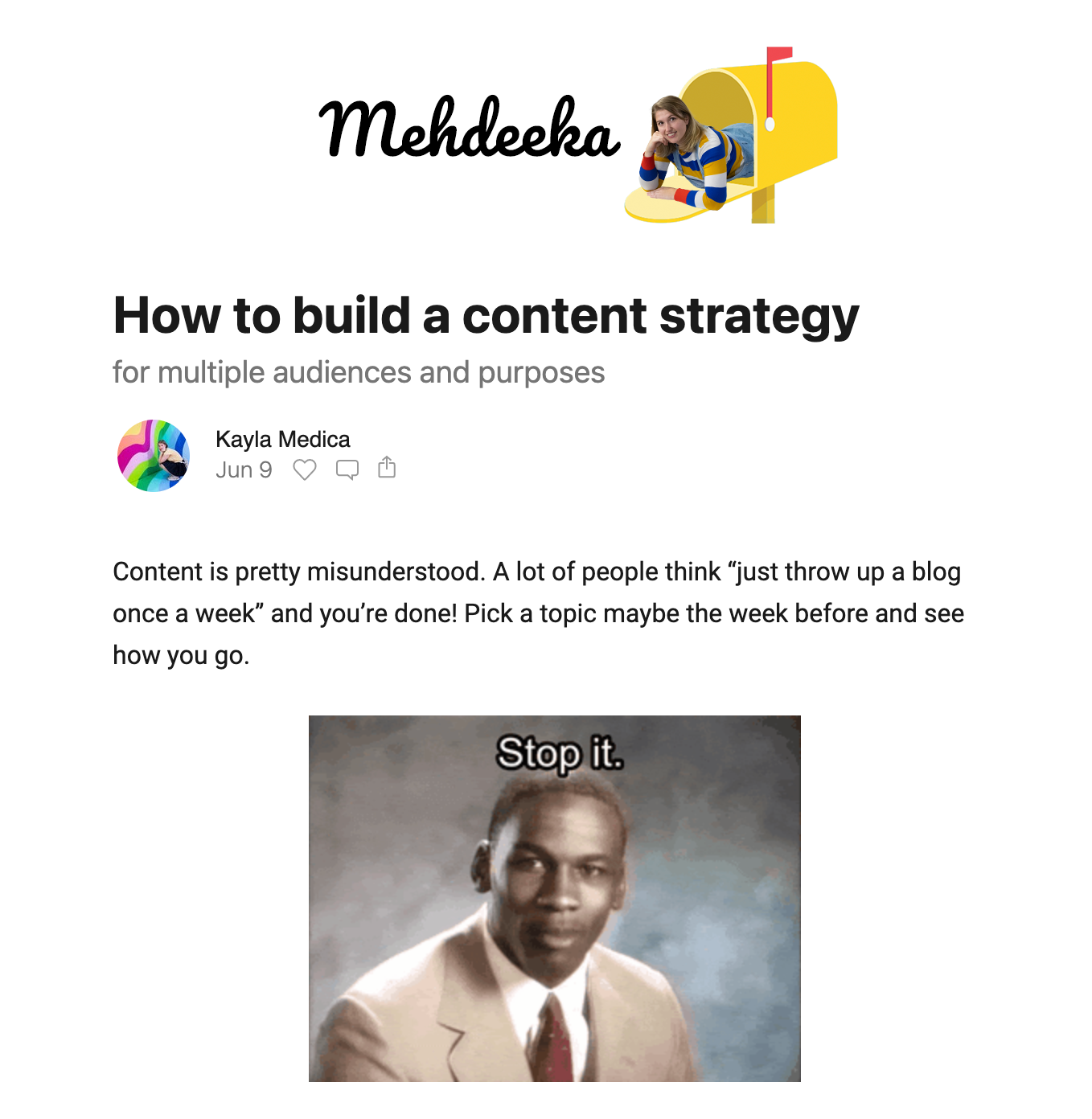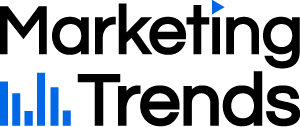Kayla Medica

At Marketing Trends we are discovering what drives Australia's top marketers. In this episode, Kayla Medica tells us about her role as Product Marketing Manager at the SaaS company Willow, and the challenges that inspired her to launch her marketing newsletter Mehdeeka, focused on B2B and SaaS marketing content for solo marketers.
Read Kayla's story here ↓
Career & professional background
Kayla, how did your career in marketing start?
Originally, I went to uni to do Japanese and wanted to be a translator. I got an internship which turned into a full time role at a small marketing agency in Sydney that focused on Japanese restaurants that wanted to increase their non-Japanese customer base. At first, I was mainly translating materials into English (I was the only native speaker), and overtime as I picked up the nuances between Japanese and Australian marketing preferences I started to do more than just translate.
After that I tried to make it as a freelance translator, but kept getting marketing jobs!
If you hadn’t pursued a career in marketing, in which other industry do you think you might be?
With the knowledge I have now, translating would have probably never turned into a full time role. There’s only a small market for it and I was never good enough to get to the top. If I were to pick another career now, I think I’d either be an artist or run a cafe or restaurant.
Could you tell us about your role as Product Marketing Manager at Willow?
Product marketing is still a fairly new area of marketing, and even newer to Australian organisations. Depending on where you are, it can be different things and even report to different departments. At Willow — which is a B2B SaaS business — I’m part of the marketing team but do work very closely with the product, sales, and customer success teams.
It’s a very collaborative role, and as it’s a new role in the company I’m focusing on really foundational projects like value propositions, packaging, sales decks, and documentation. Customer comms and campaigns for engagement and retention also come in, as does personas, case studies, and other more ‘typical’ areas of digital marketing. I wrote more about product marketing in my newsletter, Mehdeeka.

What motivated you to start Mehdeeka?
As a marketer that has always worked in small businesses, and often the only marketer, I found that learning opportunities were usually self-led, and the local publications that covered advertising and marketing were focused on big, newsworthy brands.
It became a bit demotivating to read about huge campaigns that were in the multi-million budget range and probably had a team of ten or 20 people working on it. I couldn’t apply any of those learnings in my day-to-day.
I also was finding it hard to meet other B2B SaaS marketers to learn from. Mehdeeka was my solution to both of those challenges. It’s a weekly newsletter often inspired by whatever I’m working on that week. One week it’s PR, the next it’s lead scoring, then it’s email marketing.
I wanted to read content that was for marketers who had to do it all themselves, so I started writing that content and interviewing marketers who were doing the same.
Marketing & Industry Trends
What type of impact has COVID- 19 had on your industry?
I joined Willow this year so can’t speak to what happened when Covid was initially impacting Australia. However, at my previous role we had an initial wave of emotion-driven buying leading to our second best month of sales at the time. This was then followed by an extremely difficult period where customers became highly-risk averse, and kept pushing out to “next quarter, next calendar year, next financial year”.
I think each lockdown that has happened since has had its own buying trends, so what you do to overcome it once may not work a second time.
What is the most exciting trend or innovation happening in your field in terms of growth?
I think more than anything, the thing that is a relief to me is that younger, more digital-savvy marketers are doing away with vanity metrics and the waffle that marketers have a bad reputation for. There are still many marketers today who hide behind jargon to avoid delivering low numbers, or to avoid taking responsibility for something not going well, but I’m finding with younger marketers they do this much less.
It may be because more marketers are entering the industry from more diverse experiences and backgrounds. Marketing is definitely something that you don’t need a degree in to get started —I have a degree in Japanese after all.

As a marketer, what do you believe is the biggest challenge facing your industry in the future?
To some degree, the current political and social challenges that are facing Facebook and Google are going to impact the future of marketing, but I also believe smart marketers are nimble enough to think of alternative channels and thrive there.
Another challenge is that many teams are stuck being reactive. Overcoming that and becoming proactive, experimental, and industry-leading marketers is definitely difficult but something we should all be striving for. If we need to bite the bullet and hunker down for a quarter, the short term pain is worth it for the long term gain (and peace of mind).
Tools, recommendations & sources of inspiration
What does a typical day look like for you?
There’s rarely a “typical” day. One day I might be working almost exclusively with the sales team, one day I might be with the product team. My focus changes a lot due to the nature of my role being across different areas.
What I try to keep consistent is my check-ins with key players, blocking out time to actually do the work, and being available for social chats when I can. It can be really easy to only reach out to people when you want something when you’re spread across different departments, but I don’t want to only ever be asking for something so I make sure to show respect, ask how people’s days are going, and if there’s anything I can do to help them out.
What brands do you take inspiration from?
Honestly, so many. There are the really big ones like Google, Disney, Adidas, and Lego for the big budget, boundary pushing work. Then there’s smaller local brands like Who Gives A Crap, or any of the work from CD & Co.
Lately I’ve been making more of an effort to find and support the work of individuals or startups, and I particularly like the signature styles of Sha’an d’Anthes and Eva Cremers.
I subscribe to the Thing Testing newsletter, which is just full of newly launched brands and deep dives into brand trends. It's a great resource for all things brand.

Software and tools recommendations: what is the one software you can’t work without and why?
You know I really believe it’s not the tool but the hand that wields it. You need to find what works for you. Previously I used Notion to track all my work. Now I use the default Notes app and my team uses monday.com. I use Google Keep and Memento’s new tab to-do list for my personal life.
I’m also a fan of pen and paper.
What are three resources you would recommend for anyone working in your field?
Well obviously Mehdeeka for one! I really recommend Bob Iger’s Ride of a Lifetime, it’s the best business book I’ve ever read, and my third resource is whatever you find creatively inspiring.
All work and no play is no fun, and so is all-business resources. I find that visiting museums or galleries, reading art books, and generally just having broad interests to be an endless supply of inspiration. I know those don’t inspire everyone though, so find what works for you and make sure you set regular time for it.


